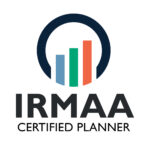We’re continually looking for approaches to get the most out of our customers’ retirement funds. One such avenue is the Roth 403(b) plan, a less commonly known but highly advantageous investment option.
This type of plan offers unique benefits compared to traditional pre-tax plans like the Traditional 401(k) and IRA. With a Roth 403(b), you make contributions with after-tax dollars, allowing for tax-free income during retirement—a significant advantage for those anticipating being in a higher tax bracket post-retirement.
In this blog post, we’ll delve into various aspects of the Roth 403(b). We’ll compare it with other retirement plans, discuss contribution limits and their potential growth advantages. Further on, we’ll explore the tax implications associated with these accounts and how changing taxation laws might affect retiree withdrawals from designated Roth accounts.
We will also touch upon rollover strategies from traditional accounts into Roth accounts while highlighting estate planning benefits and potential pitfalls. Lastly, we’ll provide insights on using your retirement savings smartly to reduce Medicare IRMAA charges by managing MAGI effectively through different types of retirement savings.
Understanding the Roth 403(b) Retirement Plan
The Roth 403(b) is a retirement savings plan offered by schools, non-profit organizations, and certain institutions. It’s like a regular 403(b), but with a twist – you contribute after-tax dollars and enjoy tax-free growth over time.
Benefits of choosing a Roth 403(b)
- Tax-Free Income: Unlike Traditional IRAs or 401(k)s, withdrawals from Roth 403(b) accounts are generally tax-free. Cha-ching.
- No RMDs: No required minimum distributions means you can keep your money growing for as long as you want. Retirement, here we come.
- Flexibility: You can choose to contribute before-tax or after-tax (Roth) dollars, depending on your employer’s plan. Options, baby.
Comparing traditional pre-tax plans with designated Roth contributions
Traditional IRAs and regular 401(k) plans are cool, but designated Roth contributions have some extra perks. With Roth plans, you can contribute more (hello, higher contribution limits.) and potentially enjoy tax-free income in retirement. Just make sure you follow the IRS rules, okay?
Oh, and here’s a fun fact: Roth 403(b) accounts can also help you lower your future Medicare premiums. Who doesn’t love saving money?
How Do Contribution Limits Work for Different Retirement Plans?
Self-employed individuals are able to contribute the maximum amount allowed by law for 401(k)s and Roth 403(b) plans, which is not the case with Traditional IRAs. No income limits holding them back.
Maximum Annual Contribution Limits Across Different Retirement Plans
The IRS sets the rules, and in 2023, the max contribution limit is $22,500 for both Roth 401k and traditional 401(k) plans. Folks aged 50 and up can contribute an extra $6,500 on top of the standard limit. Cha-ching.
But wait, the Roth IRA is like the little sibling with a cap of $6,500 ($7,500 if you’re 50+). No income limits, though. So, anyone can join the Roth party.
Advantages Of Higher Contribution Limits For Potential Growth
Employer-sponsored plans like the Roth 403(b) let you stash away more moolah than individual schemes. More money, more growth, more retirement fun.
And here’s the cherry on top: funding designated Roth accounts with after-tax dollars means potential tax-free income later. IRS says so. No worries about Uncle Sam taking a big bite out of your golden years.
Tax Implications and Considerations
Contributing post-taxed money into your retirement account, like a Roth IRA or a Roth 403b, can be a smart move. Contributing post-taxed funds into a Roth IRA or 403b can be advantageous, as the monies placed in these accounts grow without additional taxation when withdrawn.
Evaluating Current and Future Tax Rates
Tax rates currently set by the federal government span from 10% to 37%. If you’re in a higher tax bracket now but expect to be in a lower one during retirement, contributing to designated Roth accounts could save you some serious cash.
But predicting future tax rates is like trying to predict the weather. So, consider diversifying your investment options by splitting contributions between pre-tax (traditional) and after-tax (Roth) accounts. It’s like having both an umbrella and sunscreen in your retirement plan.
Impact of Changing Taxation Laws on Retiree Withdrawals
There’s been talk about changing taxation laws that could affect how withdrawals from retirement accounts are taxed. Some proposals even suggest limiting contributions to Roth IRAs for certain retirees. Stay informed about potential policy shifts that might impact your long-term financial planning. It’s like keeping an eye on the weather forecast before heading out.
For further guidance on the impact of potential policy shifts, consult with a knowledgeable financial advisor – they can act as your personal navigator to ensure you reach a tax-efficient retirement. They can help you navigate the complex world of retirement savings and taxes. Think of them as your financial GPS, guiding you towards a tax-efficient retirement.
Rollover Strategies: Traditional to Roth
Rolling assets from pre-tax retirement accounts like Traditional IRAs into Roth accounts can be a smart move for estate planning. Your heirs won’t owe a dime if you pass away with money still in the account.
Estate Planning Benefits of Roth Rollovers
Roth accounts offer tax-free income in retirement, which is great if you’ll be in a higher tax bracket later on. Plus, unlike Roth IRAs, designated Roth contributions don’t require minimum distributions at age 72. Your money can keep growing tax-free for as long as you live.
If you plan to leave your nest egg to your heirs, converting traditional 401(k) or 403(b) plans to Roth IRAs can be a big win. Your beneficiaries will get the funds tax-free since you already paid taxes on the conversion.
Potential Pitfalls to Consider
While there are many advantages to rolling over assets, there are a few things to watch out for:
- Tax Implications: Converting pre-tax dollars to after-tax dollars means paying taxes upfront. If you cannot pay the taxes out of pocket, it could limit your potential for future tax-exempt distributions.
- MAGI Considerations: A large conversion could push you into higher Medicare premium brackets.
- Five-Year Rule: To make penalty-free withdrawals on earnings, you need to have held the account for at least five years and be over 59 ½ years old.
To avoid pitfalls and maximize benefits, consult with financial professionals who know the ins and outs of each retirement savings option available today.
Using Your Retirement Savings To Reduce Medicare IRMAA Charges
The Roth 403(b) retirement plan, along with other designated Roth accounts, can help you save on healthcare costs in your golden years. It’s like a secret weapon against high Medicare premiums.
Understanding how MAGI affects Medicare premium costs
Your Modified Adjusted Gross Income (MAGI) determines your Medicare Part B and D premiums. If your income exceeds certain thresholds set by the IRS, you may face higher premiums due to IRMAA. But here’s the catch: distributions from designated Roth accounts, like Roth 403b or Roth IRA, don’t count towards MAGI. You can take out cash from these types of accounts without it being added to your taxable income for the year.
Strategies for reducing MAGI through smart retirement savings
- Roth Conversions: Convert Traditional pre-tax contributions into after-tax dollars through a “Roth conversion.” Pay taxes upfront, but enjoy tax-free withdrawals in the future. MAGI stays low, and so do your Medicare premiums.
- Tax-Free Investments: Invest more in Roth plans like Roth 401(k)s or Roth accounts within Section 501 organizations. These accounts offer similar benefits and can help you dodge those pesky IRMAA charges.
- Distribution Planning: Strategically plan when and how much to withdraw from different retirement accounts each year. By managing your taxable income, you can keep your Medicare premiums in check.
In a nutshell, using after-tax contributions wisely can save you thousands in healthcare expenses during retirement. Keep your MAGI low, and those IRMAA charges won’t stand a chance.
FAQs in Relation to Roth 403(b)
Is it a good idea to have a Roth 403(b)?
What are the restrictions on Roth 403(b)?
Conclusion
In conclusion, the Roth 403(b) retirement plan is like a unicorn – rare and magical, offering tax-free income in retirement and the potential to lower your tax burden with after-tax contributions.
Choosing between traditional pre-tax plans and designated Roth contributions is like deciding between a plain donut and a donut with sprinkles – the Roth 403(b) gives you that extra sweetness of higher contribution limits and potential growth over time.
When it comes to rollover strategies, think of it like a game of chess – you need to carefully plan your moves to maximize estate planning benefits and avoid potential pitfalls.
And remember, using your retirement savings strategically is like playing a game of dodgeball – you want to dodge those Medicare IRMAA charges by managing your MAGI effectively.


